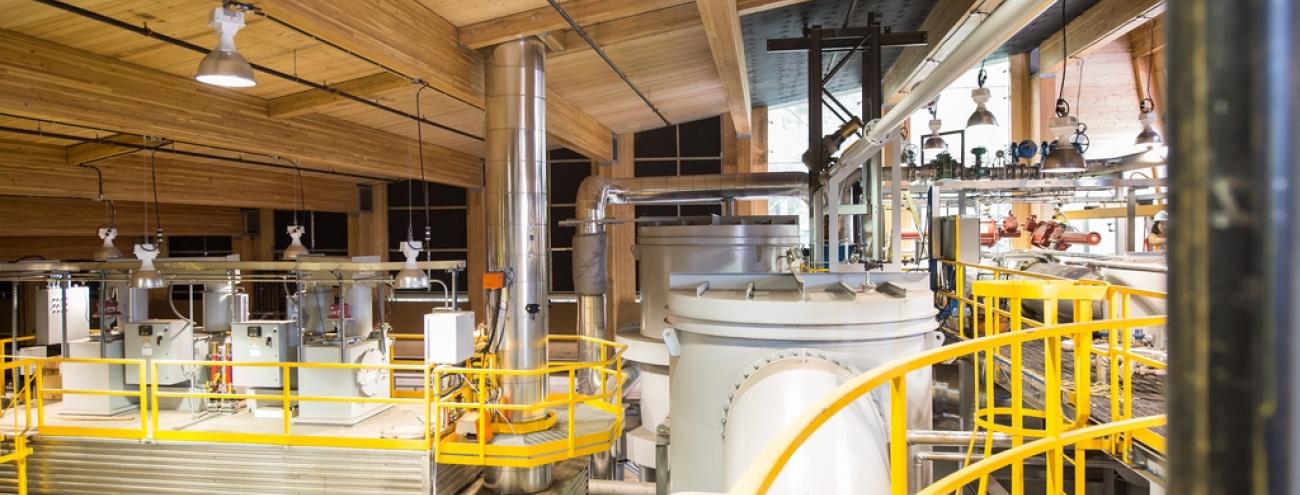
The "Bioenergy from Commercial-Municipal Organic Waste" project aims to demonstrate that the organic waste collected on the UBC Vancouver campus and from nearby municipalities can be used as a biogenic energy source to heat the campus and help UBC meet its Climate Action Plan 2030 emission reduction goals. This project is a collaboration among the Department of Chemical and Biological Engineering (CHBE), the Clean Energy Research Centre (CERC), and the Bioenergy Research and Demonstration Facility (BRDF). We interviewed the project team to learn more about their work.
Interviewees:
- Naoko Ellis, Professor, CHBE
- Jason Rako, People and Process Manager, Energy and Water Services
- Sergio Berretta, Adjunct Professor, CHBE
- Tony Bi, Professor, CERC
The team collectively shared their insights and answered our questions.
Q: What led to the focus on using organic waste for bioenergy at UBC?
Across the region, by-laws are in place to force the diversion of organic waste from landfills, mainly to reduce environmental impacts. In landfills, organic waste leads to the formation of methane, a powerful greenhouse gas. However, the environmental benefits of the diversion strategy are predicated on how that diverted organic waste is subsequently treated.
Currently, UBC Vancouver and adjacent municipalities send most of their organic waste to a facility in Delta where it is decomposed into compost, with a significant portion of that compost typically being shipped to far away regions to be used as a bioremediation agent in contaminated soil projects. The carbon footprint associated with transportation and treatment is significant, negating much of the environmental benefit sought by the original diversion strategy.
These facts inspired us to reimagine the use of organic waste, which is mainly biogenic carbon in its dry form, to improve the carbon footprint of its disposal. This was the starting point leading to the current project.
Q: Why is this project crucial, considering both UBC’s context and its broader implications?
UBC, the City of Vancouver, and other local municipalities, have all pledged aggressive emission reduction targets. However, with over 90% of UBC’s Operational emissions and approximately 54% of the City of Vancouver’s emissions coming from heating their buildings, targets will be missed if natural gas remains the main energy source for heating.
Q: What aspects of this project are most compelling to you personally?
Closing the loop on waste generated on campus has been a passion project for Prof. Ellis. The UBC biodiesel project initiated in 2002 converted waste deep fryer oil from campus food outlets to biodiesel to fuel lawn mowers. The current CLL project also aims to close the loop on organic waste to be used as energy source for campus heating.
Q: Can you describe the industrial-institution-academic collaboration that powers this project?
This project is a collaboration between UBC and Anaconda Systems Limited. On the one side, we have UBC’s many years of experience working in the BRDF, gaining valuable expertise in direct biomass to thermal energy conversion and biomass to gasification conversion. On the other hand, we have Anaconda, which brings almost a decade of organic waste pre-treatment and treatment experience, both in the handling of municipal and commercial wastes.
Q: What change or impact do you hope to achieve through this project?
A lofty goal for our group is to get UBC and local municipalities to reimage the value of their organic waste and contribute to greenhouse gas reduction targets. At a more granular level, we are hoping to better define organic waste types and pre-treatment process steps that can generate suitable feedstocks for bioenergy facilities.